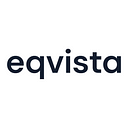How Do Public SaaS Companies Work?
SaaS, or “software as a service,” is a game-changer because it gives organizations easy access to robust applications and services without investing heavily. Public SaaS businesses have become major participants by providing software solutions and earning large amounts of money via a novel business model. A study of public SaaS firms will be carried out in this article by examining their features, income sources, and approaches.
Public SaaS companies revolutionize software delivery by providing scalable solutions that empower businesses to succeed in the digital era.
The Rise of Public SaaS
Previously cumbersome software delivery methods to enterprises have been rendered obsolete by publicly traded software-as-a-service (SaaS) providers. Software as a service removes costly on-premises installations and provides scalable solutions to the changing demands of businesses.
The SaaS companies have been witnessing rapid growth, Early-stage SaaS companies received over $30 billion in VC investment in 2022.
The Inner Mechanics
Software engineering, data management, network architecture, and customer service are all cogs that keep public SaaS firms turning. All of these collaborate to provide remarkable interactions for users. Public SaaS providers spend much money on reliable and scalable software infrastructure. Their teams relentlessly test and implement new ideas to stay ahead and satisfy their customers’ ever-evolving needs.
By leveraging public SaaS solutions, businesses can focus on their core competencies while relying on expert providers to handle the software infrastructure and continuous updates.
Software Delivery Model
Companies that offer public SaaS provide consumers with access to their software via a web browser or specialized software. Using the same software, multiple users can access a common set of resources and features while ensuring that residents’ data remains distinct from other users.
Infrastructure and Cloud Computing
Public SaaS providers use powerful cloud computing infrastructure to host and administer their software applications. This setup ensures that users always have access to their data while being scalable and highly available.
Subscription-based Model
Customers of publicly traded SaaS providers often pay a subscription fee periodically to use the service. This method has several benefits for enterprises, including fixed costs, scalability, and the flexibility to adapt to changing requirements.
Public SaaS companies operate on a subscription-based model, unlocking the power of cloud computing to deliver seamless and cost-effective software solutions.
Continuous Updates and Support
Public SaaS is advantageous since it provides automatic upgrades and enhancements. Businesses constantly provide updates and new features to improve their products and services’ usability, safety, and overall quality. In addition, public SaaS providers place a premium on customer service and offer helpful tools like documentation, tutorials, and active help centers.
Integration and Collaboration
In today’s interconnected corporate world, integration and cooperation are crucial. It can integrate with other programs to help smooth the transfer of information and automation process. Working together and getting better results is easier when you use tools like collaborative document editing and communication interface.
Data Security and Compliance
Security of customer information and adherence to relevant legislation are top priorities for publicly traded SaaS firms. They use advanced methods to keep consumer information secure, including encryption, permissions, and audits. Compliance with privacy rules like GDPR and CCPA is crucial to guarantee data security and create confidence with consumers.
SaaS Trends to Watch Out for in 2023
According to industry data, the SaaS sector will grow at a CAGR of 13.7% from 2023 to 2030. Cloud services are expected to gain popularity due to the rising adoption of cloud computing, the increased burden of maintaining on-premise infrastructure, and the imperative for continuous innovation in the digital age. In recent data, the ProfitWell B2B SaaS Index reported a 0.92% increase in the month from May 22 to June 22, which translates to an annualized growth rate of 11.4%. This signifies that the total monthly recurring revenue (MRR) for these B2B SaaS companies was 0.92% higher on June 22 compared to May 22.
Are you aware of any more recent updates of SaaS ? Please share your insights in the comment section.
Ready to Value Your SaaS company with Eqvista?
There are some key variables to keep in mind While valuing SaaS companies.
Businesses have adapted to changing conditions with the help of public SaaS providers’ adaptable and effective software. Eqvista recognizes the significance of publicly available SaaS and its effect on today’s organizations. Our platform provides forefront cap table management, equity compensation, and company valuation solutions to help startups and expanding businesses thrive. We make it easy for companies to handle equity management issues so they can concentrate on running the business. Eqvista’s intuitive design and suite of features make it an ideal companion for public SaaS entrepreneurs seeking to maximize equity management efficiency. Book a call with us to know more.
